How to Select the Perfect Dining Room Table for Your Space
Choosing the right dining room table isn’t always easy. They are one of the biggest pieces of furniture in most people’s homes. A dining room table will also last for years, so they tend to stay around long after people have grown tired of them.
Don’t settle for a dining room table that’s just “okay.”
Choose a dining room table you’ll be happy with for years to come. After all, the dining room is often second only to the kitchen in most people’s homes as far as the most used room. It’s where people gather. Planning the perfect dining room will set the mood for meals and celebrations, so it only makes sense to invest in the right furniture.
So how do you select the perfect dining room table?
How to Choose a Dining Room Table Shape
One of the first questions we hear from people planning a dining room is: “Which dining table shape should I choose?”
The right dining table shape can make a big difference. It plays a bigger role in designing your ideal dining room than many people think. That’s because the shape of your dining room table affects how much space you’ll need around the table, how formal or casual your dining room looks and how many people you can seat.
So before choosing a size or style, start by selecting the right shape of dining table for your home. Here are some specifics:
Rectangular
Rectangular tables are the most popular shape for dining room tables. It’s a classic shape that works well in both modern and contemporary homes. Smaller rectangular tables fit neatly into tight kitchens, while longer tables add a timeless elegance to classic dining rooms.
Square
Square dining room tables are a relatively recent trend, and they tend to fall on extreme ends of the size spectrum. On one side, there are small, intimate pub tables. On the other side are large, dramatic showstoppers. If you have a large dining room and are looking for a statement table to fill it, consider a square one. In smaller rooms, be aware that the size of a square table could overwhelm the room.
Square tables often have similar features as rectangular tables. One consideration with large square tables is how to pass bowls around. Because of the size and shape of these tables, it’s common to pass food around the table to reach the intended person. Consider adding a lazy Susan in the middle of the table to make it easier to share meals.
Things to keep in mind when looking for square or rectangle tables include:
-
- Choose a table with leaves for flexible seating. Rectangular tables with leaves are a good choice for flexible seating options. If you regularly host gatherings, consider these extendable tables. A rectangular table with drop leaves makes it easy to add a few chairs for larger gatherings, while keeping a small footprint for everyday meals.
- Opt for a narrower table to improve the flow of a small room. Most rectangular tables are at least 36 inches wide. If your dining room space is narrow, however, you may want to consider a table with a slimmer profile. This can also be a good choice for improving the flow of a combined kitchen/dining area. It’s also an excellent way to give a contemporary touch to a classic room. Make sure you’ll still be able to fit serving bowls on the table.
- Combine a rectangular table with existing bench or banquet seating. Looking to incorporate an existing nook or banquet seat with your dining room? Choose a rectangular table the length of the seating area or slightly shorter. This can also be an effective way to make the most of space in a small dining room.
Circle
When it comes to popularity, round tables are right up there with rectangular ones. Smaller round tables are a good space-saving option for small dining rooms. The seating flexibility that comes with round tables are one of their biggest benefits. Since many round tables have a pedestal base, it’s easy to add extra chairs when needed.
Even larger round tables tend to create a cozy, intimate atmosphere in your dining room. That’s because it’s easy for everyone to hear each other talk at a round table. Compare this to a longer rectangular table, where people usually talk to only those seated next to them.
Oval
Oval dining room tables will provide a formal, elegant appearance for your dining room. These tables may have either legs or a pedestal base, and they tend to seat more people than round tables. If you often seat large groups, an oval table may be a good alternative to a rectangular one. One of the bonuses of oval tables is that no sharp corners make it easy to add chairs and to prevent injuries in busy kitchen/dining room areas.
Oval tables have many of the same design benefits as round tables, and some things to consider for round or oval tables include:
-
- Choose a pub table for a small, intimate space. Pub tables can be as small as 30 inches across, which makes them ideal in small kitchens. If you’re seating just one or two people, consider one of these as an alternative to a larger round table. Bonus: smaller tables tend to make conversation easier.
- Use the curves of a round table to balance out sharp lines. Round wood tables are an ideal way to soften up a minimalist dining room or to simply provide a contrast to the straight lines of contemporary furniture. A round table with a pedestal base, like our Silverton Pedestal Table, may be just the ticket. If you’d like to integrate a round table with contemporary décor, consider a round table with a mission style base or with legs or slats in the base.
- Look for a larger round table if you need to seat more than four people. Most round tables will seat at least four. If you need to seat more than four people, look for a table that’s at least 60 inches wide. If these larger tables start to make your dining room feel cramped, it may be better to opt for a smaller round table with leaves that can be added for larger gatherings.
How to Choose a Dining Table Size
Making sure your dining room table has the right measurements for your home is another important consideration. A table that’s too small will make it hard to seat family and friends, but a table that’s too big can make your dining room feel small and cluttered.
How many people will be sitting at the table?
Luckily, determining the right size for your dining room table is fairly straightforward. Consider how many people usually will sit at the table.
If you’ll use your dining table primarily for family meals, the following guidelines may help. These recommendations are common manufacturer measurements. However, some table makers may have other recommendations:
Rectangular tables
Size of table Number of people seated
4’ long 4
5-6’ long 6
7’ long 8
8-9’ long 10
10-11’ long 12
Round Tables
Size of table Number of people seated
3’ with pedestal base 4
4’ with legs 4
5’ with legs 4
5’ with pedestal base 6
6’ (all base types) 8
7’ (all base types) 9
The number of people your table seats will also be affected by the type of seats you’ve chosen. Smaller seats may make it possible to seat more people. Bar stools, benches and dining nooks will all make it possible to seat more people. On the other hand, upholstered dining room chairs or dining room chairs with arms will require more space.
How big is your dining room?
The other major factor to consider is how big your dining room is. If possible, make sure there’s at least 36 inches of space between the edge of the table and the wall of the room. This will make it easy for diners to slide chairs back and move around the table.
If your dining room has cabinets or a hutch in it, measure from the edge of this furniture. This will give you a more accurate estimate than measuring from the wall in a crowded room.
Of course, not all home layouts make measurements easy to determine. What about open layouts, where the dining room opens directly into the kitchen or the living room? If you’re planning a dining room in this type of space, there are still a few guidelines that can help.
In most open layouts, furniture instead of walls provide natural visual breaks in a room. Furniture can also be an obstacle for chairs, as well as for walking. In these spaces, measure the dining area from the wall to the first obstacle in the room. Look for at least 36 inches of clearance between the table and the obstacle.
If you’re considering a specific table, and you’re not sure what it will look like in the room, use a sheet or blanket to visualize it. Fold the sheet to match the measurements of the table you’re looking at and place it on the floor. Consider the following:
- Does the table look too big or too small in the room?
- Do you have enough room to walk around the table?
- Can you still access items in cabinets easily?
If you’re choosing a dining table set with larger chairs, make sure to include these in your measurements.
Here are some other considerations when measuring your dining room:
- Are you planning to use a rug or other furniture to visually separate the dining area from the rest of your home? Placing a rug under your dining table can be a great way to distinguish your dining area in an open layout. Consider measuring from the edge of this rug instead of from the edge of the dining table. A walkway of 48 to 60 inches between the edge of the rug and the dining area will help to keep the space visually distinct and allow people to move around freely.
- Does your table need to have wheelchair access? If you have a relative in a wheelchair, you may need more clearance between the table and the wall. If this is your situation, try to ensure at least one seat has 54 inches between the table and wall.
- Do you want a dining room with a formal look? Formal dining rooms tend to have larger chairs and more clearance between the table and wall. More space between the table and walls will help a formal dining table stand out. Instead of 36 inches, try to ensure 42 to 48 inches of clearance between the table and wall.
- Do you need more storage in your dining room? The dining room is a natural place to store dishes, linens and other items. But too much storage can make a small room seem even smaller. One option to reclaim your space is to combine storage with your dining room table. A dining nook is an unobtrusive way to do this. Consider benches with built-in chests or drawers for larger items like table linens. For smaller items, a farmer’s table with a drawer may provide all the space you need.
How to Choose a Dining Table Style and Design
Choosing the right dining room table involves more than shape. The design of the table, style of legs and choice of chairs all play a role in your dining room. Some of the things you might consider include:
Dining room table materials and colors. The color and material of your dining room table will have the biggest impact on the appearance of your dining room. Along with natural wood, dining tables could be made of glass, metal or tile. When choosing the color and material of your table, consider:
- The size of your dining room and how much light it has. If you have a smaller dining room or your dining room is dark, you may want to choose a lighter material to brighten up the room. Natural oak, red oak, light cherry and ash are all lighter wood shades that can brighten up a small room. A glass tabletop is another option for a brighter table. However, be aware that glass tabletops are not as sturdy as wood.
- Whether you plan to move the table frequently. Do you regularly move your table outside for gatherings? If so, consider a lightweight or a smaller table that will be easier to move. You might want to look at something like a pub table.
- What colors and textures you prefer. With natural wood tables, the color and material of the wood will have the biggest impact on what your dining room looks like. These tables are natural statement pieces, which is why we select wood for its grain and color as well as its durability. For dining room tables, choose hardwoods instead of softwoods, MDFs or plywood. Hardwood is stronger and more durable, and many hardwoods also naturally have a strong grain pattern.
Style of dining room table legs. Most dining room tables have either legs or a pedestal base, but these aren’t your only options. For longer oval tables, consider a double pedestal base. If you like the look of corner legs but want more flexibility with seating, consider a trestle base. Take a look at these specifics below:
Corner Legs
Many people think that corner legs make tables look more “anchored” than pedestal bases do. An additional benefit of corner legs is that you’ll have more stability, which is important for longer tables.
However, corner legs mean that you’ll have less flexibility with seating because you’ll need to place chairs between legs. And for tall people, or people with long legs, corner legs might get in the way when getting in and out of seats.
There are also a range of different styles that come with leg tables:
Straight or circular corner legs.
You can find straight or circular legs in a wide variety of styles, from classic to contemporary. Straight table legs don’t need to be boring, either. Many corner table legs have knobs, ridges, or even decorative scrolling on the legs.
Examples:
Both have corner legs, but the legs on an Asheville table have the classic, square appearance of mission style dining room tables. The legs on a Berkshire table include both decorative barrels and a tapered foot.
Sabre corner legs.
Corner legs don’t have to be straight, either. Sabre legs are corner legs that are both tapered are flared. Made popular by 19th century woodworkers, this design is a great choice for corner legs on a round table.
Example: Canterbury Leg Table
 Pedestal Base
Pedestal Base
These tables have a single base in the middle of the table. Although pedestal tables have a single base, there’s still a wide range of designs. The style of the pedestal can range from curvy, ornate designs to minimalist square designs.
-
-
- Easier to rearrange chairs to seat different groups
- Won’t block people with long legs like corner legs might
- Usually less stable than corner legs
- Not a good choice for longer tables
-
Considering a pedestal table and looking for dining room inspiration? Some of the possibilities for these types of tables include:
Traditional single pedestal bases.
These compact tables are an ideal choice for combined kitchen and dining rooms. The minimalist shaker style pedestal makes it easy to pull up a chair. And the round table top helps keep conversation flowing.
Example: Camrose Single Base Table
Square pedestal base.
This type of pedestal base provides the best of both worlds in a dining room. The pedestal legs give more space than a table with corner legs. However, the four-legged design of the base mimics the shape of tables with corner legs.
Example: Mariah Double Pedestal Table
Double pedestal base.
Double pedestal bases are often used for longer oval or square tables. Like corner legs, these pedestal bases provide additional stability on the ends of the table, but the pedestal bases allow for greater flexibility when placing chairs.
Example: 42 x 66 Dutch Table in Oak
 Trestle Legs
Trestle Legs
Trestle legs are an alternative to both corner legs and pedestal bases. A trestle base is a four-legged base in the middle of the table, and it’s commonly used on rectangular or oval tables. It’s a popular alternative base for Mission and Shaker style furniture, so many of these bases have the clean lines and slats associated with these styles.
Trestle legs are desirable because they provide the stability and anchored appearance of corner legs on larger tables. However, because the legs are placed further in from the corners, it’s easy to seat large gatherings or pull up a few extra chairs.
Examples:
Choosing the Right Chairs for Your Dining Room Table
When planning a dining room, it’s helpful to consider the chairs you’ll use with your dining room table as well. If you’ve selected a dining room set, the chairs are designed to match your table.
However, mixing and matching chairs and tables is a popular trend that can look great in many dining rooms, too. If you’ve chosen to purchase the table and chairs separately, consider the size, style and height of the chairs you’ll use with your table. To make this work, look for common elements between your table and chairs.
For instance, choose chairs with some curves in the design to complement a round table. If your table is rectangular, look for chairs with a square seat or a bench that will match the sharper angles of your table. If you’re considering upholstered chairs, the pattern of the fabric can also be a common element. Look for rounder, softer patterns to complement round tables, and more geometric patterns for rectangular ones.
When you’re wondering which dining room set you should choose, AmishOutletStore.com has you covered. Take a look at our high-quality, solid wood dining tables online or contact a representative for more assistance.

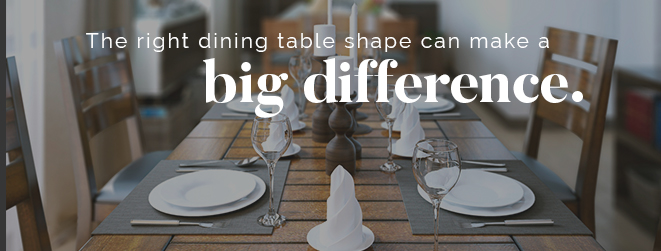
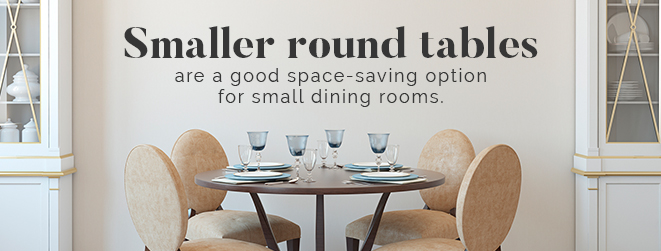
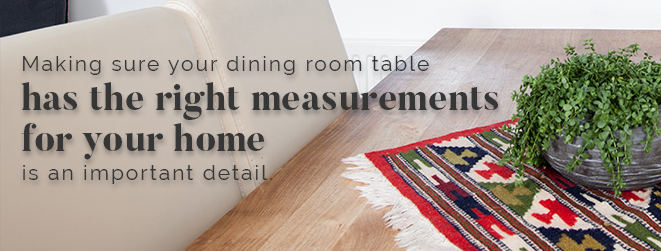
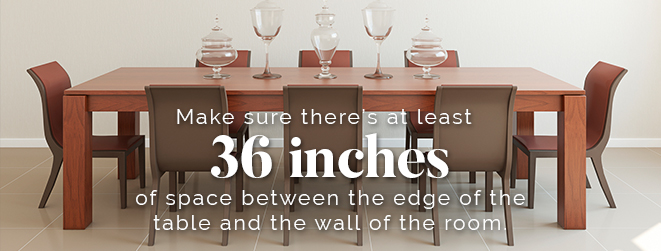
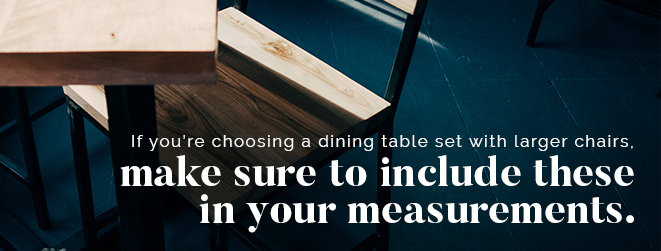
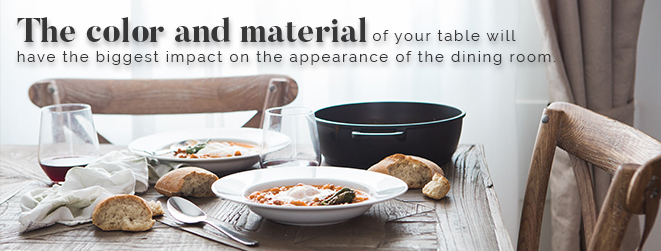
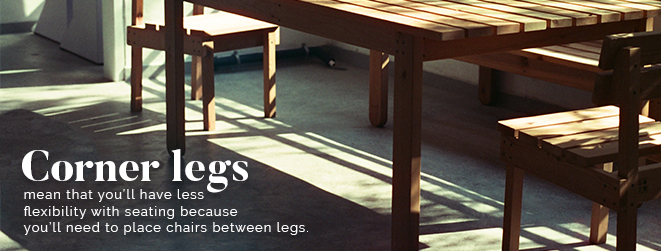 Pedestal Base
Pedestal Base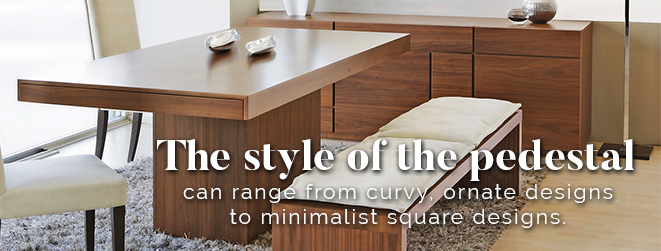 Trestle Legs
Trestle Legs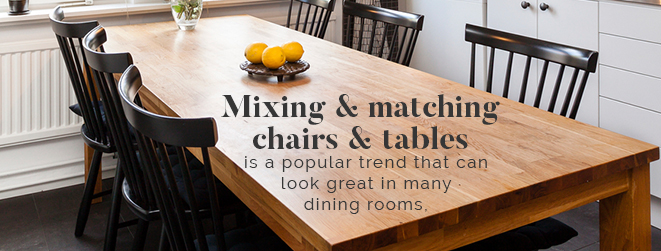










 Are you a visual person? Check out our video to see how easy our process is!
Are you a visual person? Check out our video to see how easy our process is!